The global fandom for both Game of Thrones and The Song of Ice and Fire was divided when House of the Dragon was initially revealed. The prequel had the support of half of them, while the other half was extremely apprehensive in the wake of the disastrous final season of Game of Thrones.
However, Ryan Condol and Miguel Sapochnik have already shown in just one episode that they are more than up to the task of putting the proverbial Ds who shall not be named right. Heirs of the Dragon was absolutely all it should have been, but if you were hoping it would be a faithful recreation of Fire & Blood, you might be a little let down.
Because there are some significant changes between the source work and its depiction on screen, as is the case with every adaptation. Here are the top 10 differences between Fire & Blood and House of the Dragon Episode 1 without further ado. This serves as your spoiler alert before you continue reading.
King Jaehaerys was not present at the final deliberations of the Great Council of 101 AC in the books
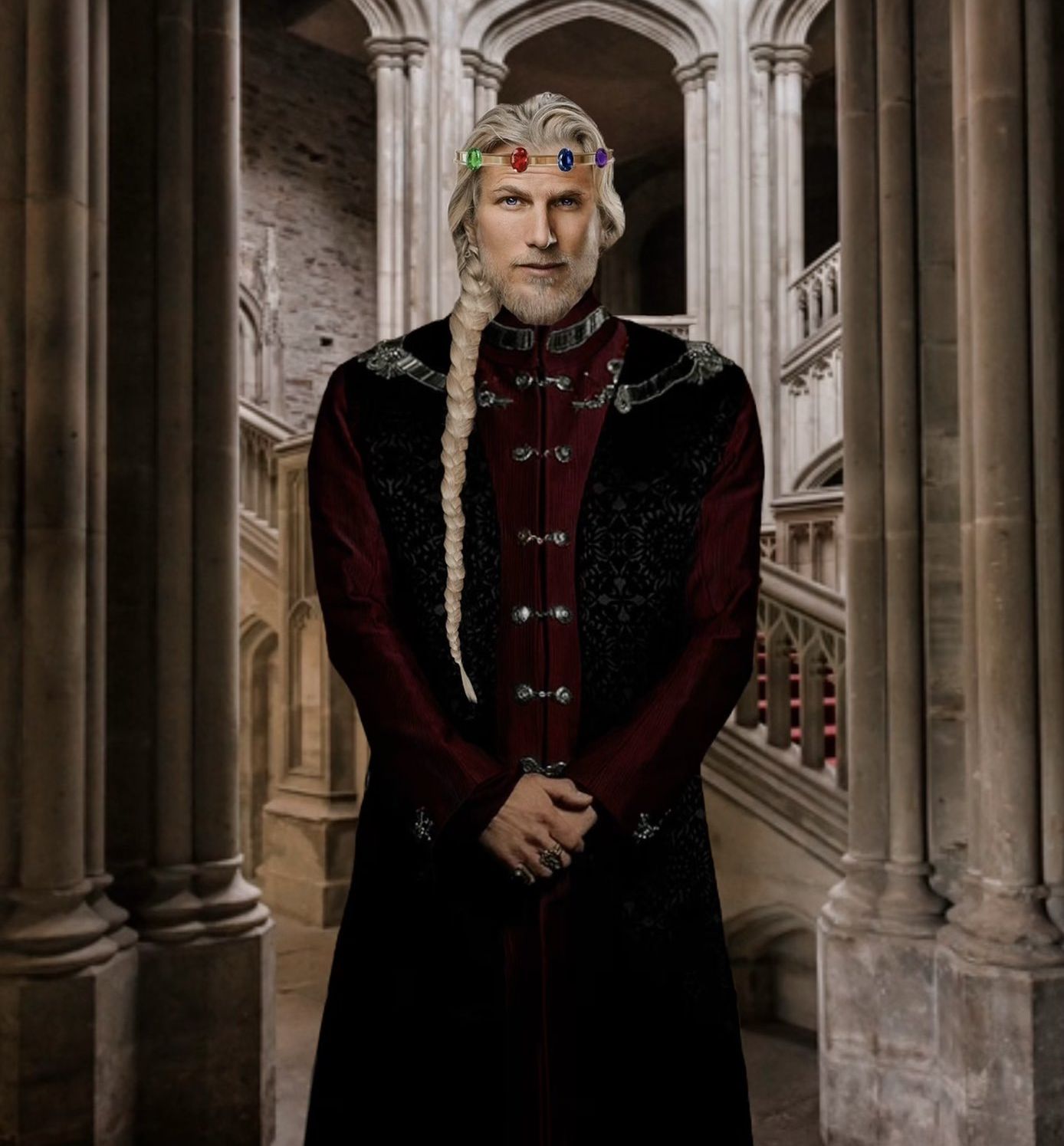
House of the Dragon’s first scene effectively captures the core of what the series will be about: a suspenseful and scandalous political thriller in which one royal family will render itself. However, one member of the royal line stands out not by his absence but rather by his presence as the camera pans to reveal the eerie halls of Harrenhal (pronounce: Harren-Hall) and the thousand lords assembled within it.
Scottish actor Michael Carter portrays King Jaehaerys in a brief episode of the show; in fact, Jaehaerys does not even have a single line of conversation. The fact that he was present at the Great Council, however, marks a significant departure from Fire & Blood because, despite having called the meeting, the Old King did not take part in the vote himself. Instead, he simply honored the outcome that was given to him because it favored his preferred heir in any case.
By 101 A.D., Jaehaerys was too old and distraught to handle managing his realm adequately. He had lost his sister-wife and son and heir in fast succession, and as a result, even his own council was filled with unfamiliar faces. After 101 AC, Jaehaerys had started losing his mind and was restrained to his bed. All of his reliable advisors had also vanished. The young Lady Alicent was the Old King’s constant companion during his last years, reading to him, bathing him, and helping with all manner of tasks.
In 103 AC, The Old King passed away while lying in bed and listening to Alicent read the book Unnatural History by his best friend Septon Barth. We believe that Jaehaerys’ attendance at the Council was a great addition to the show because: 1) the scene itself was absolutely regal, as it should have been; and 2) having Jaehaerys present for the crucial decision regarding the succession of a lineage that, if left unchecked, would ultimately lead to its own destruction, added the weight that such a crucial matter demands. Let us talk about the claimants while we are still on the subject of importance.
Viserys competes against Rhaenys, not Laenor, for the throne in House of the Dragon
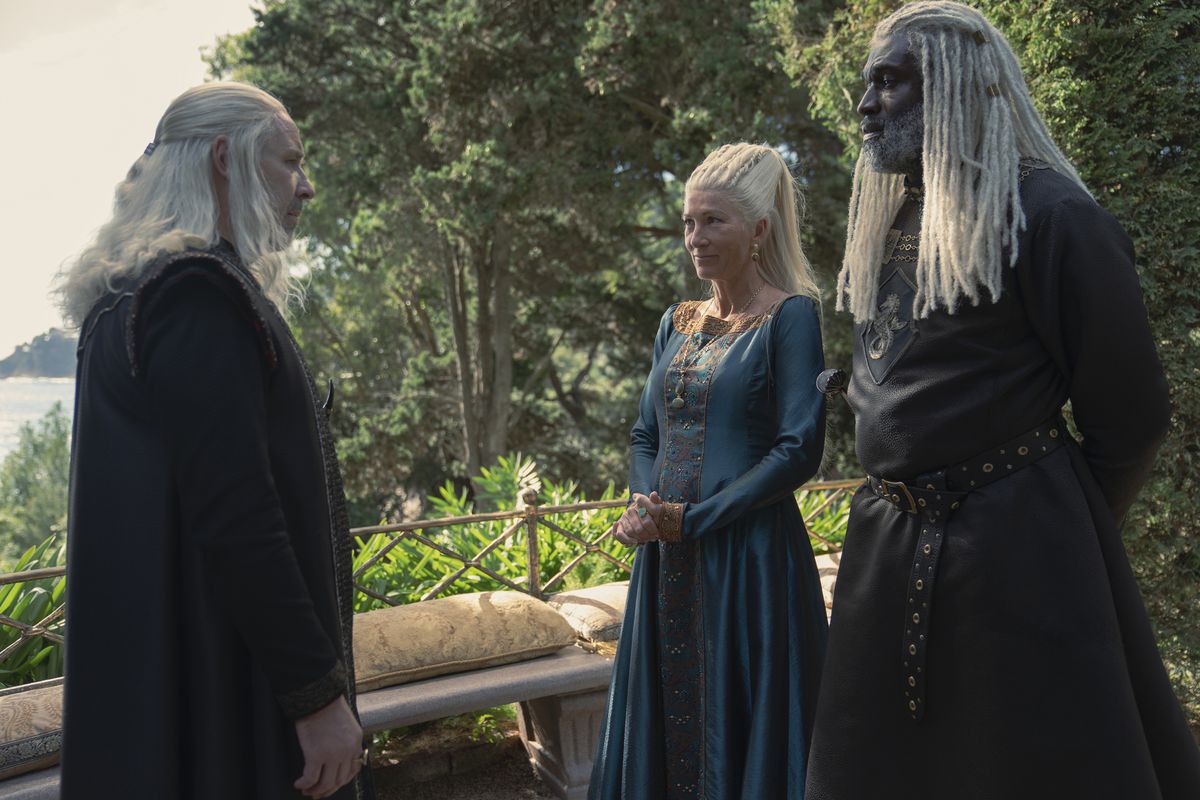
This might seem like a small thing to you, dear viewer, but it makes all the difference in the world when it comes to the matters of Westerosi politics. The opening sequence of House of the Dragon clearly establishes the fact that the succession contest was being fought between Rhaenys- the “eldest” living heir of Jaehaerys- and Viserys; the eldest male living heir of the Old King.
Though the proclamation that 14 claims were heard and deliberated upon during the Great Council made by one of the maesters is taken directly from the books, the final two aren’t. In Fire & Blood, the succession contest that eventually ended up dividing the house of the dragon was held between Viserys and Princess Rhaenys’ son Laenor. The concept of male primogeniture is key to this distinction. In medieval feudal societies, inheritance was usually granted as a right only to the male successors of a family.
This went for property and kingdom alike. And because Laenor was 7 years old by the time the Great Council was convened, he was an eligible candidate thanks to his matrilineal lineage. Rhaenys’ father was Jaehaerys’ first heir Prince Aemon, and when she was born, Queen Alysanne had proclaimed her Westeros’ “queen to be” but Jaehaerys picked Baelon- his next eldest male child- as his heir instead.
The gender dynamics of succession remained a bitter poison in what was an otherwise perfect marriage between Jaehaerys and Alysanne, and it would also become the reason for some of their major quarrels. When the Great Council was finally convened, Rhaenys’ husband and Laenor’s father Lord Corlys Velaryon used his wealth and political influence to get their son’s claim some major support.
House Baratheon- Rhaenys’ mother’s family- was also backing Laenor Velaryon, so were many houses from the North and the Riverlands. But in the end, Laenor lost 1 to 20 to Prince Viserys. Making the switch to Rhaenys not only makes sense, given that it looks like Laenor and Laena were both born after the Great Council in the show, but also because it gives a lot of weightage to Queen Alysanne’s views.
She was one of the greatest Queens Westeros had ever known, effectively sharing her husband’s rule with him, and was the source of many of Jaehaerys’ more-celebrated policies. The fact that the show pitted Rhaenys against Viserys instead of Laenor not only honours Alysanne’s choice, but also shows the divide between her and Jaehaerys in a show-not-tell kinda fashion. It’s a detail that only someone who has read Fire & Blood would pick up on, but it is a cool one nonetheless.
Syrax is not a court dragon
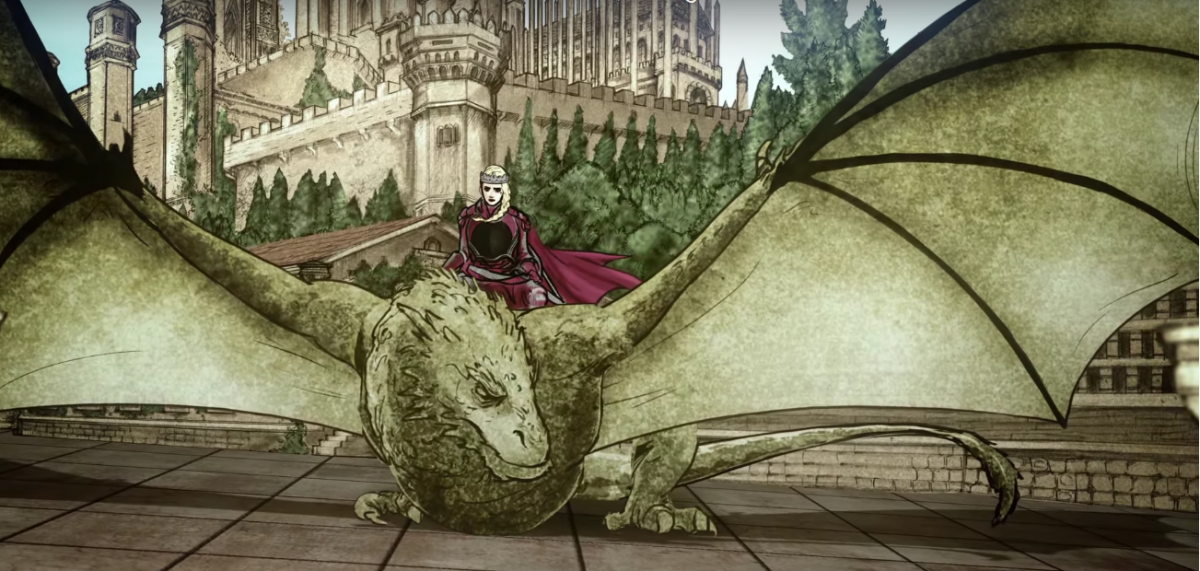
The first official shot of House of the Dragon after the title card rolls over is that of Rhaenyra Targaryen riding her dragon Syrax through the air. As she makes her way into King’s Landing, the pair head towards the Red Keep and then they fly past it, landing at the Dragonpit instead, which is odd because according to the books, Syrax was a “court dragon”. Every dragon reflects the personality of their rider according to George R. R. Martin, and by that metric, Syrax and Rhaenyra had to be one of the most-pampered dragon-and-rider duo to have ever existed.
It is often said that Viserys spoilt Rhaenyra silly, even as a child, and a year after claiming Syrax, she was named heir by her father. During her years at court, Syrax would stay in one of the stables at the Red Keep, bound by heavy chains but it wasn’t necessarily out of precaution. Much like the Old King’s Vermithor and Queen Alysanne’s Silverwing, Syrax was used to the presence of human beings and was by all accounts a most-courtly dragon.
Rhaenyra would often fly her around King’s Landing but would never give her over to the Dragonkeepers, preferring to keep Syrax closer to herself. So the fact that House of the Dragon puts Syrax in the Dragonpit at the beginning is interesting because Syrax will be involved with one of the more senselessly tragic acts of the Dance in the final stages of the show. Instead, what they’ve chosen to do it looks like, is highlight the singularly Valyrian nature of the dragonbond through Rhaenyra and Syrax.
When Rhaenyra lands, the Dragonkeepers communicate with Syrax in Valyrian and the dragon obeys the commands it is given, seemingly understanding the words of its keepers. Moreover, the entrance to the Dragonpit looks like the entrance to a volcano, which is also apt since George has stated many times that Targaryen dragons loved lairing on Dragonstone because of the volcanic presence of the Dragonmont.
So instead of emphasizing just why the court-savvy Rhaenyra keeps Syrax as close to herself as she does, the show-runners have chosen to focus on their Targaryen-ness instead, which is a very welcome culture insight into Valyrian culture. Though we’d be lying if we said we did not want to see Rhaenyra straight up land a dragon in the inner courtyard of King’s Landing; can you imagine the commotion the extras would have to make? It would’ve been priceless. Oh, and speaking of Rhaenyra…
Rhaenyra and Alicent are shown to be court companions on House of the Dragon
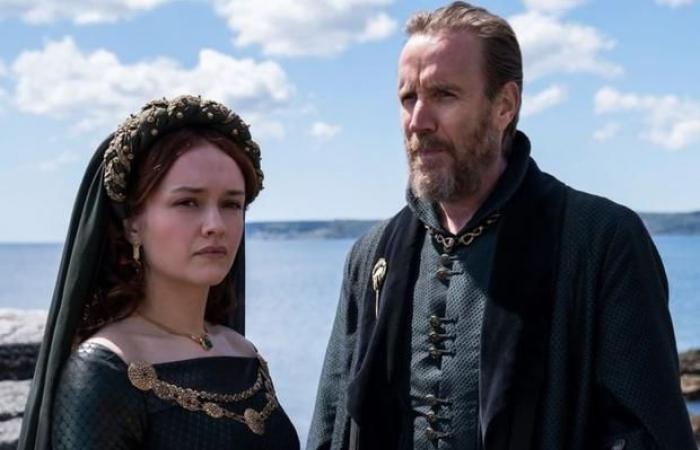
This is a detail that is entirely unique to the show because, as far as we can tell, Rhaenyra and Alicent never had anything beyond a cordial relationship with each other in Fire & Blood. In Martin’s “official continuity”, Alicent was born in 88 AC whereas Rhaenyra was born in 97 AC, putting 9 years between the two girls. Moreover, Alicent had been tending to Jaehaerys during Rhaenyra’s infancy, and was already a woman grown by the time she was announced the official heir to the Iron Throne. So when Alicent and Viserys “fell in love”, Rhaenyra didn’t question it and instead told her father that he deserved to be happy.
At their wedding day, Alicent kissed Rhaenyra and named her daughter for all the realm to see, but things soon broke down between them once Alicent started giving Viserys his heart’s desire on a near-annual basis. We think that while the scene was last described might be kept intact in the show, but the context surrounding it is going to be much more tense and salacious.
Because in House of the Dragon, Alicent and Rhaenyra are shown to be constant companions, the implication being that Otto Hightower brought his daughter to court to get close to the royal family. The two girls share a relationship much like Sansa and Arya, but also different, in that they are not nearly as confrontational with each other as the Stark Sisters were. Instead, you could even argue that the two love each other and care for each other very much.
They’re inseparable in that they do most of their activities together, which is what is going to make the eventual circumstances of Viserys’ marriage to Alicent that much more controversial. House of the Dragon is clearly setting up the Hightowers- and ostensibly the maesters as well- as having been as scheming a family as the Lannisters and Otto is practically Tywin Lannister’s predecessor based on the interactions we’ve seen him have with Viserys, Daemon and Alicent.
While Rhaenyra in Fire & Blood had her illusions about her new step-mother snapped rather quickly, Rhaenyra in House of the Dragon seems set-up for a nasty and very personal betrayal of trust from someone who, if we’re correct, has no qualms doing unspeakable things for the sake of power. And speaking of Rhaenyra and Alicent being court companions…
House of the Dragon’s timeline and character relations are a bit all over the shop
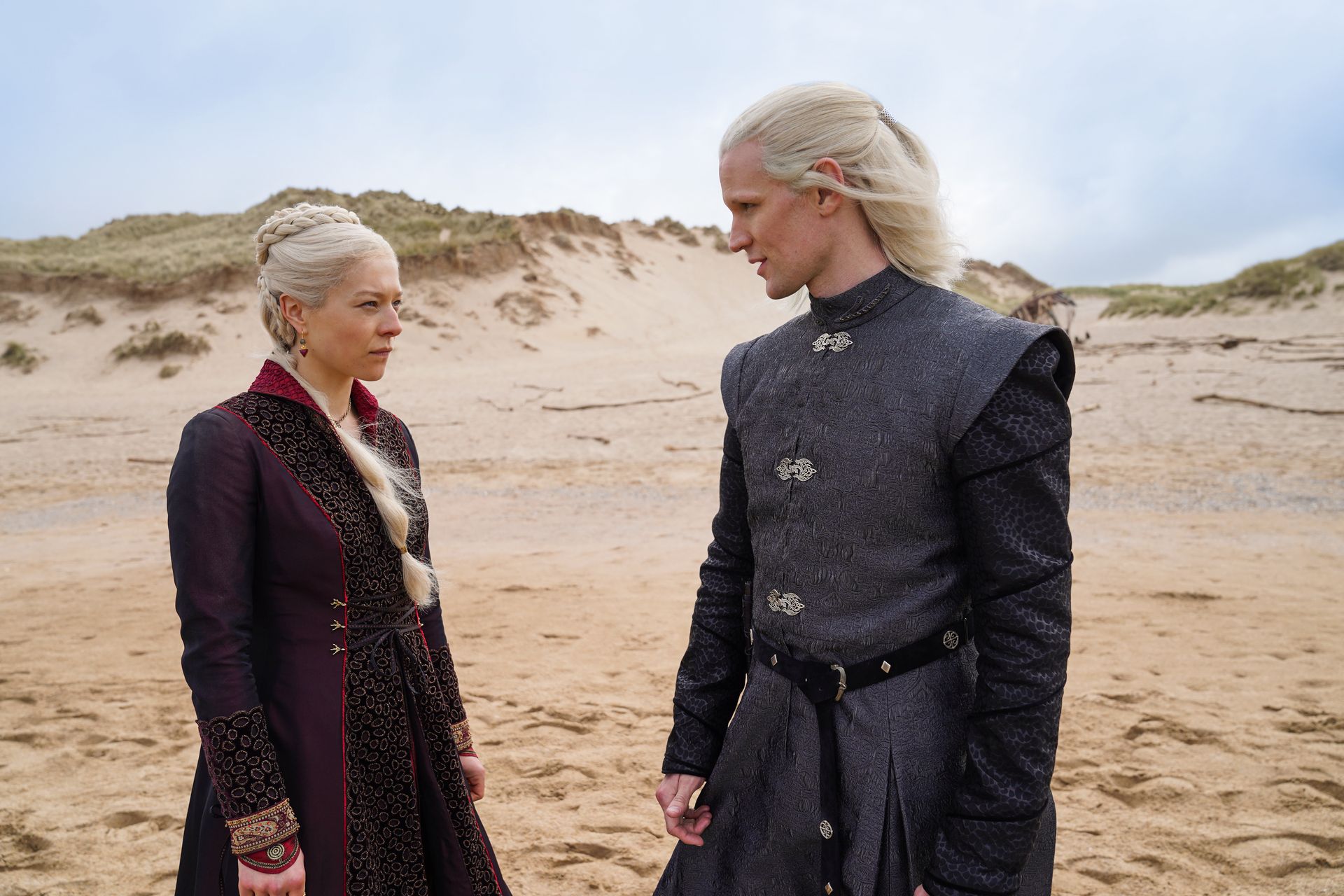
After the opening sequence of House of the Dragon concludes, we see a screen grab that tells us the current timeline of the series is set in the 9th year of King Viserys’ reign, 172 years before the birth of Daenaerys Targaryen. It seems like a simple enough thing to say, but it is an entirely different story when you consider the fact that the TV show is not the books and the dates are significantly different between the two of them. Characters in Game of Thrones had to necessarily be aged up due to some of the- let’s just say visceral scenes- simply being outright illegal if the producers had stuck to George’s script to a T.
As a result, characters like Daenaerys and Jon Snow- who are 15/16 years old in the Dance of the Dragons- are about that old when Game of Thrones begins. So Daenaerys’ birth date is a bit of a toss-up, because if it was 284 AC- like in the ASOIAF continuity- then House of the Dragon would canonically be set in 112 AC. This would make sense, as Rhaenyra would be 15 years old by that point, which is about as old as Milly Alcock looks in Heirs of the Dragon as it is. But considering the age issue, the official Game of Thrones birth date for Daenaerys is 281 AC, which would put House of the Dragon somewhere around 109 AC, which becomes a problem for a few reasons.
First, the Heir’s Tourney canonically takes place almost a year before Aemma Arryn even “delivers” Viserys’ son; in fact, it is most likely the tourney that was held in honour of Viserys’ ascension at Maidenpool in 104 AC where he declared his son by Aemma would be his heir, because a year later, the queen died in childbirth, and was shortly followed by the son Viserys had desired for so long.
By contrast, Queen Aemma manages to stay alive for 9 years of Viserys’ rule, far more than her Fire & Blood counterpart. Also, Rhaenyra and Alicent’s relationship, their ages, and the relationships that they develop with the people of King’s Landing are markedly different from the books. For instance, Jaehaerys’ final two years were spent mistaking Alicent for his estranged daughter Saera, but if we are correct about the show’s timeline being 109/110 AC, then that would imply that Viserys succeeded his grandfather immediately after the Great Council’s conclusion.
The fact that Alicent carries a book with her to read to the king might be a nod to this condensation of events. And the Triarchy is also merely mentioned by Lord Corlys as a potential threat at a Small Council meeting, where in the books they were one of Westeros’ biggest naval enemies by this point.
So you can see that certain liberties have been taken when it comes to chronology and character relations, especially with regards to the Royal Family. Though most of the major events remain the same, they’ve been workshopped around to fit a more linear timeline than the sprawling tome that is George’s original creation. And speaking of changes to chronology and continuity, one of the biggest changes from book to show is sitting on Viserys’ Small Council.
Lord Corlys Velaryon was not on Viserys’ Small Council
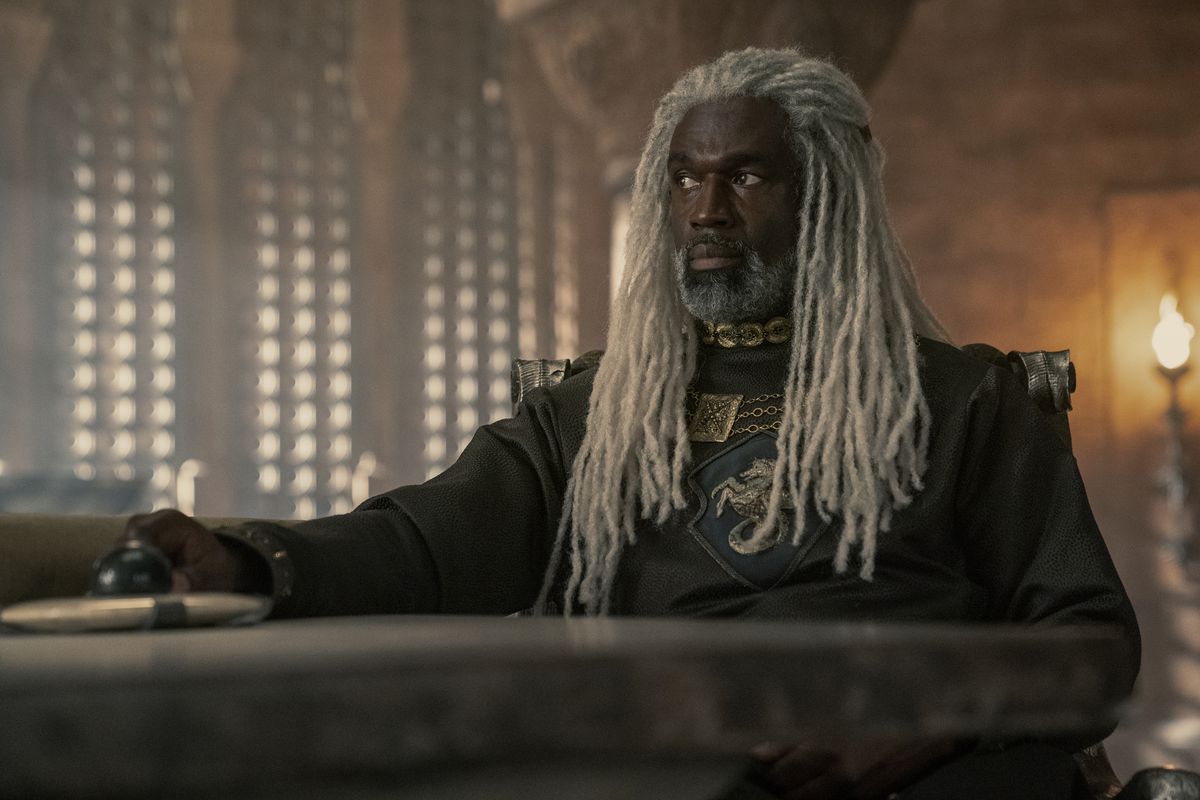
One of the most ambitious and charismatic leaders that House of the Dragon is going to feature heavily throughout the series is Lord Corlys Velaryon. Known to the people of Westeros and beyond as the Sea Snake, Corlys was perhaps the greatest sailor and captain that the Seven Kingdoms had ever known.
He stepped on his first ship at 6, and by 16 was a captain himself. Corlys conducted 9 grand voyages across the Known World, as far as Ib & Asshai, and came back with so many treasures in his holds that he became the richest lord in all of Westeros, despite House Lannister’s goldmines. Lord Corlys served as the Lord Admiral of King Jaehaerys’ Small Council in the books, but after his son Laenor’s claim was passed over at the Great Council, he quit his position and retreated to High Tide with his wife and children.
By contrast, it appears as though House of the Dragon is determined to have all the drama play out at King’s Landing, because not only are Corlys and Rhaenys living at court, he is also butting heads with King Viserys on matters more urgent than feasts and tourneys. It is Lord Corlys who brings up the issue of the Triarchy to the Small Council first, a concern that Otto and his cronies immediately dismiss.
When Daemon puts together his City Watch, Corlys backs his actions as being the right call before a tourney that is meant to be in the name of the Royal Heir. And when the matter of succession is discussed after the funeral of Queen Aemma and Prince Baelon, Corlys is the only person on the Small Council who reminds Viserys that he already has an old, male heir hidden in plain sight; Daemon himself.
In Fire & Blood, the alliance between Corlys and Daemon was borne out of a need that they both shared, but it was forged outside of the walls of King’s Landing. In House of the Dragon, it is looking likelier by the day that Corlys and Daemon will ally with each other in the walls of the Red Keep itself, and personally, we think it is a great call to have the most-ambitious man of Westeros be the voice of dissent on a Council that is obviously filled with yes men and manipulators.
Rhaenyra and Viserys’ relationship seems to be more distant than it is described as being in Fire & Blood
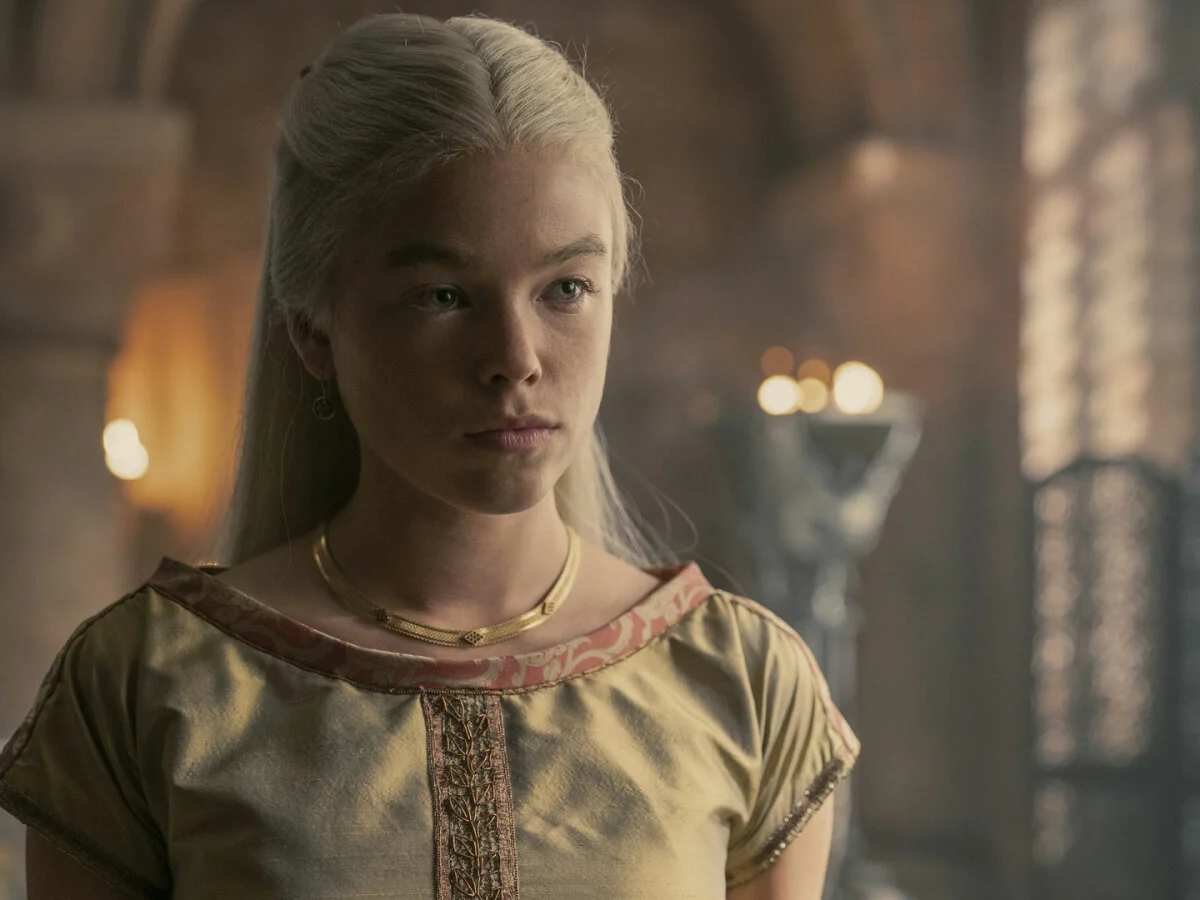 The discussion on relation dynamics isn’t over yet because one of the biggest changes from book to show, so to speak, is the way Viserys treats Rhaenyra. In Fire & Blood, all accounts agree that Viserys doted over Rhaenyra and indulged her in all things, to the point she was called The Realm’s Delight in her young age. When she turned 8, Viserys named her his cupbearer and after the death of Aemma and Baelon, he named her his official heir.
The discussion on relation dynamics isn’t over yet because one of the biggest changes from book to show, so to speak, is the way Viserys treats Rhaenyra. In Fire & Blood, all accounts agree that Viserys doted over Rhaenyra and indulged her in all things, to the point she was called The Realm’s Delight in her young age. When she turned 8, Viserys named her his cupbearer and after the death of Aemma and Baelon, he named her his official heir.
Though part of the motivation was to rein in Daemon’s ambitions and teach him a lesson in how to treat family, another part of it was Viserys’ love for Rhaenyra. Even after re-marrying to Alicent, Viserys never disowned Rhaenyra as his heir, even going so far as to say that Alicent wanted her sons to succeed him as opposed to his daughter towards the end of his own life. This is different from what is shown in House of the Dragon because there, Viserys is about as distant from Rhaenyra as a father can be.
Sure, she is his cupbearer and his somewhat constant companion during court and council, but Rhaenyra herself seemed to be a lot closer to her mother, and while she always loved her father, she knew that the only thing that would make him truly happy was a son. Viserys also spoiled his daughter by not reprimanding her for being late to every official occasion, but he never particularly showed any active interest in cultivating her future alongside her.
It’s only after losing Aemma and Baelon and hearing reports about Daemon’s comments following their deaths that Viserys decides he wants to get closer to the child he does have and names Rhaenyra his heir. It will be very interesting to see how their relationship unfolds from this point forward because we know that Viserys will marry again, and that his second marriage will cause friction between his wife and his daughter. How he chooses to deal with it is what ends up becoming the catalyst for the Dance, after all, so pardon our morbid curiosity.
House Hightower’s family dynamics are slightly different
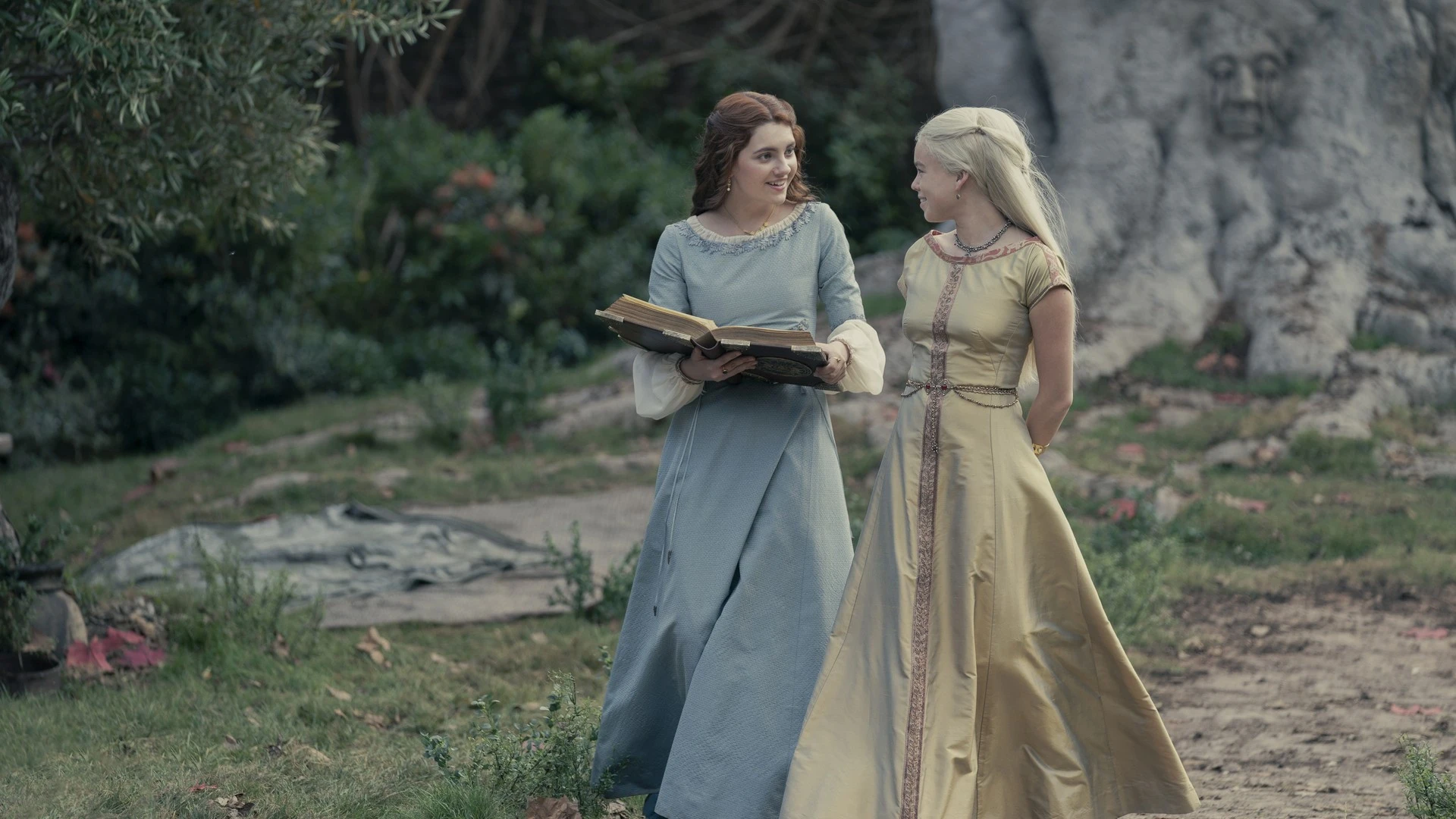
This one is a small thing but the Hightower Family’s dynamics are slightly different in House of the Dragon. While it is never outright stated that Alicent’s mother was dead in Fire & Blood, House of the Dragon confirms that implication directly. Otto Hightower himself remains the second son of the Hightower Family, with his brother Hobert being the Lord of Oldtown, but the order of his sons is changed to make the family composition more sensible for the show.
In Fire & Blood, Gwayne Hightower is the youngest of Alicent’s brothers, but in Fire & Blood, he is the oldest of Otto Hightower’s brood. We’ve already addressed the fact that Alicent is also much younger than her Fire & Blood counterpart, but one other thing that House of the Dragon outright “confirms” for us is something that is only implied in the book. It was debated that the reason that Otto brought Alicent to court was to position her as the next Queen of Westeros, no matter how scandalous her relationship with Jaehaerys might have been.
After the Old King passed away, that focus shifted to King Viserys, and it was even said that Alicent had seduced the Young King long before marrying him. House of the Dragon effectively kills two birds with one stone; it sets up Otto as the ultimate Machiavellian villain by having him convince his daughter to visit the grieving Viserys’ chambers late at night in her dead mother’s dress.
It is very clear that while Otto puts on the front of a loving father, in truth his only desire is power. That desire makes all his children mere pawns in his game, and that game might also include the maesters because while it is not overtly hinted at, there are subtle indications throughout House of the Dragon that seem to suggest an alliance between the Citadel and the Hightowers aimed against the Targaryens; a theory that has been prevalent in the ASOIAF community for over half a decade now.
Though it has nothing to do with the Hightower family personally, it has everything to do with them politically, because they have been the patrons of the Citadel since it was established and this virtually confirms the speculation that the Hightowers and the maesters have a political conspiracy in place against the Targaryens and the rest of the Westerosi High Lords in general. This point will become more apparent when Rhaenyra’s Maester Gerardis makes his entry to the series, so we’ll end this line of thought right here.
Daemon vs Criston Cole was more organized in Fire & Blood

Though the cocksure showdown between Prince Daemon Targaryen and Ser Criston Cole was everything it should have been, it did go down a bit differently than the events described in Fire & Blood. There, it is said that Cole defeated Daemon twice separately; once in the melee competition, and once during the joust, which earned him his place in the Kingsguard of Viserys Targaryen and the distinction of becoming Rhaenyra’s personal white knight.
A melee competition is highly structured with several rounds that end only after multiple opponents have been defeated, and Ryan and Miguel did a great job of showing us just how an actual joust works; none of those non-splintering lances from Season 1 of Game of Thrones were used in House of the Dragon’s production, obviously. In the show, they turned the contest between Daemon and Criston into sort of a call back to Loras Tyrell unhorsing The Mountain and the preview of Clegane Bowl before it actually happened in Season 8.
Daemon, after being unhorsed by the known Criston Cole, went after him with Dark Sister and was instantly defeated by the marcher knight yet again, thanks to his trusty “Morningstar”. It will be very interesting to see how their relationship unfolds as the season progresses because in Fire & Blood, Daemon and Criston end up becoming the objects of affection of one of the most-important women in Westerosi history, and the choices all parties involved end up making add fuel to the sparking embers of the Dance with gusto.
All of the prophecies
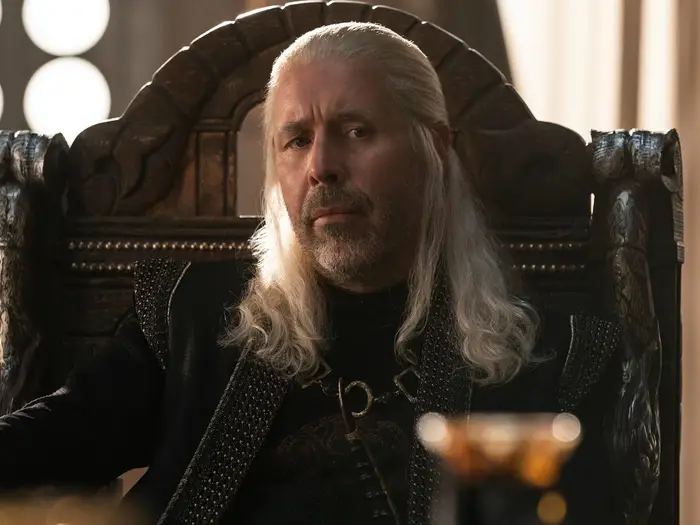
And we end this list with an entry that feels like a bit of a cop out but is also the most-blatant difference from book to screen; that being all of the prophecies that we hear of in Heirs of the Dragon. The Targaryen family has been known to have prophetic dreams since before the Doom of Valyria. In fact, it was Daenys the Dreamer’s dreams that saved them from doom and made them the only living dragonlords in the world, so dreams are an important part of their lives. Because Fire & Blood is a master’s account of the first 150 years of Targaryen rule, it is decidedly unreliable.
And if you’ve seen Game of Thrones and not read George’s books, then you’d be forgiven for thinking that Dany was the only one who had “dragon dreams” in the main timeline. But the fact is, all Targaryens possess some degree of clairvoyance, and have dreams that can describe either current events or things that are going to happen far into the future. House of the Dragon’s first episode gave us the low down on just how deep this “ability” runs by giving us not one, but two prophecies that have shaped/will shape the course of Westerosi society. The first is a dream Viserys recalls to his wife Aemma while she is preparing for birth.
He tells his wife that he saw his son come out of her wearing a crown, and when he placed the boy upon the Iron Throne, all the dragons roared as one. Viserys interpreted this to mean his son would become as great as his own grandsire; instead, it was an implication of mourning, and the dragons roared in his dream not out of joy but out of grief over the deaths of Aemma and Baelon.
This goes to show you just how tricky interpreting dreams and visions can be; they are high risk and high reward, just like most magic in George’s world. The second is a prophecy handed down to the Targaryen Kings since the Conquest, and has far more reaching consequences than the Dance; because according to Viserys, Aegon Targaryen conquered Westeros because he foresaw the Second Long Night and realised that only a Targaryen King could effectively tackle such an event. So he set his sights to the west of Dragonstone, conquered six kingdoms and opened diplomatic channels with the seventh, and unified the western continent into one powerhouse that could fight the War for the Dawn 2.0 unencumbered by petty politics.
This prophecy was called the Song of Ice and Fire by the Conqueror, and has been passed down from King to Heir since the Iron Throne was established. In a single episode, House of the Dragon managed to portray just how important the power of prophecy was for the Targaryens, and we suspect that it will continue to feature heavily throughout the series.
Not only that, we might end up seeing some honest-to-god dragonlord magic if House of the Dragon dares to indulge some of the nastier parts of Fire & Blood. Needless to say, we are lapping up every drop of content that Ryan and Miguel are throwing our way, not just because it all looks and feels amazing, but because finally, someone who respects the source material has a chance to have a go at adapting it to his heart’s content.
Marvelous Verdict
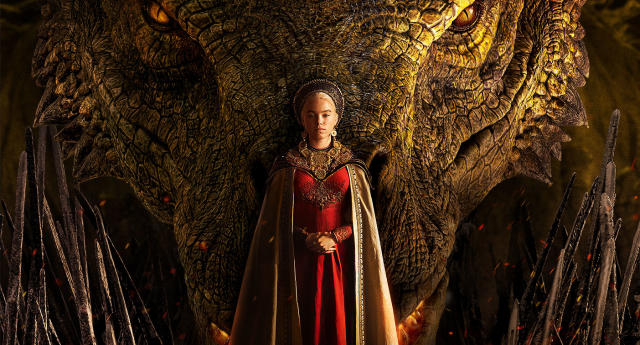
The changes from Fire & Blood to House of the Dragon are several, and in no way are they insignificant, but they do not take away from the essence of the story. Episode 1 of House of the Dragon gave you everything you needed to know about the coming conflict without ever being too gratuitous or in-your-face about any of it, and that is probably what made it work so well for us.
Personally, we can’t wait to see how the remaining 9 episodes adapt George’s work because while the differences are subtle, they are there for sure and we don’t want to stop covering them anytime soon. And with Ryan & Miguel- some of the best creative minds to have worked on Game of Thrones- at the helm of the project, we are confident that they can pull off a nuanced cinematic re-telling of the most-brutal civil war in Westerosi history. All that’s left for us to do is to wait and watch.
